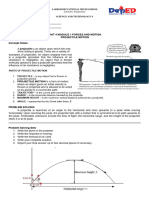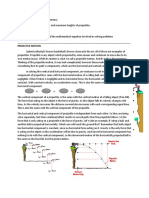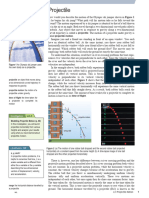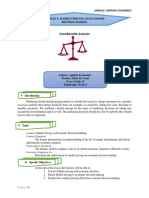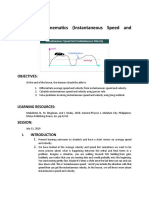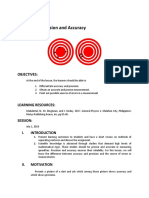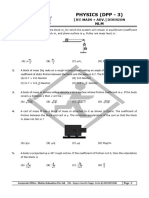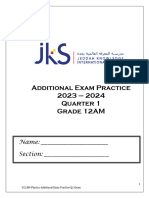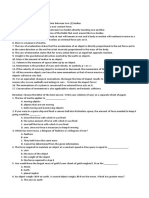0% found this document useful (0 votes)
76 views4 pagesChapter 4: Kinematics (Motion in 2 Dimension: Projectile)
This document provides an overview of a General Physics 1 lesson on projectile motion. The objectives are to determine velocity and acceleration relationships, define types of acceleration, and solve problems involving acceleration. The lesson will take place on July 19 and 22, 2019 and cover the path of a projectile subject only to gravity. Students will learn to analyze the horizontal and vertical components of projectile motion separately using equations of motion, then recombine the components to solve practice problems about the maximum height, time, and range of various projectiles.
Uploaded by
Ruby CocalCopyright
© © All Rights Reserved
We take content rights seriously. If you suspect this is your content, claim it here.
Available Formats
Download as DOCX, PDF, TXT or read online on Scribd
0% found this document useful (0 votes)
76 views4 pagesChapter 4: Kinematics (Motion in 2 Dimension: Projectile)
This document provides an overview of a General Physics 1 lesson on projectile motion. The objectives are to determine velocity and acceleration relationships, define types of acceleration, and solve problems involving acceleration. The lesson will take place on July 19 and 22, 2019 and cover the path of a projectile subject only to gravity. Students will learn to analyze the horizontal and vertical components of projectile motion separately using equations of motion, then recombine the components to solve practice problems about the maximum height, time, and range of various projectiles.
Uploaded by
Ruby CocalCopyright
© © All Rights Reserved
We take content rights seriously. If you suspect this is your content, claim it here.
Available Formats
Download as DOCX, PDF, TXT or read online on Scribd
/ 4














